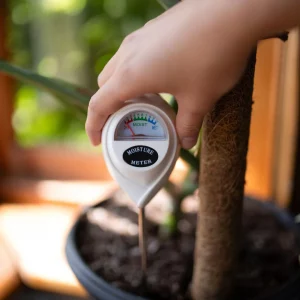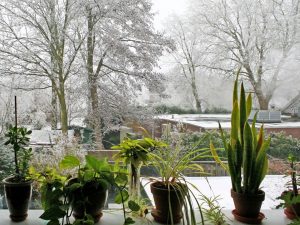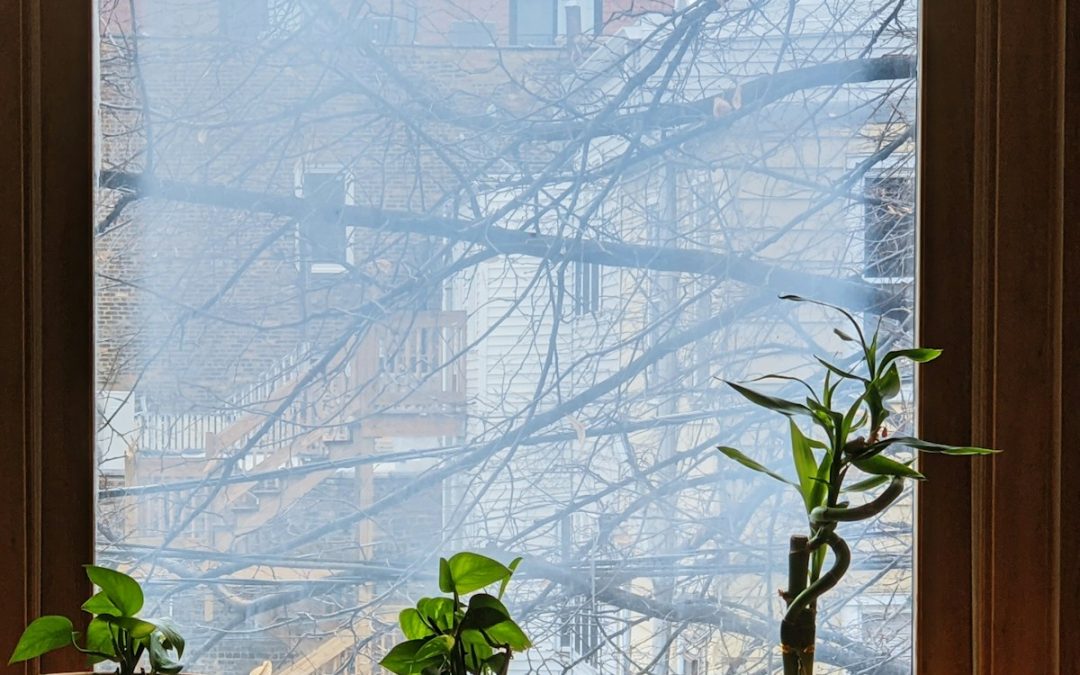Contents
- 1 How to Keep Indoor Plants Alive During Winter (Essential Tips)
- 1.1 Why Winter Is Hard on Indoor Plants
- 1.2 1. Maximize Light Exposure
- 1.3 2. Adjust Your Watering Schedule
- 1.4 3. Increase Humidity Levels
- 1.5 4. Protect Plants from Drafts and Temperature Swings
- 1.6 5. Reduce Fertilizer Use
- 1.7 6. Clean and Prune Regularly
- 1.8 7. Use the Right Tools for Winter Care
- 1.9 Related Articles
- 1.10 Final Thoughts on Keeping Indoor Plants Alive in Winter
How to Keep Indoor Plants Alive During Winter (Essential Tips)
Winter is one of the most challenging times of the year for indoor plants. Shorter daylight hours, dry air, and fluctuating temperatures can stress even the hardiest houseplants. But with the right approach, you can keep your greenery alive — and even thriving — until spring.
This guide will show you how to protect your indoor plants from common winter problems, maintain healthy growth, and prevent damage from cold or overwatering.
Why Winter Is Hard on Indoor Plants
In winter, most plants enter a period of slower growth. Less sunlight, dry indoor air, and cooler conditions make it difficult for them to photosynthesize efficiently. Understanding what’s happening to your plants helps you adapt your care routine.
Common winter stress factors include:
Reduced sunlight: Shorter days limit energy production.
Dry indoor air: Heating systems remove natural moisture from the air.
Temperature fluctuations: Cold windows and warm heaters cause stress.
Overwatering: Slower growth means plants use less water, leading to root rot.
For a more detailed breakdown of how seasonal changes affect plant growth, you can visit The Spruce’s guide on winter houseplant care.
1. Maximize Light Exposure
Light is the most important factor during winter. With fewer daylight hours, many plants struggle to get enough energy to sustain themselves.
Move plants to the brightest areas of your home — ideally near south- or west-facing windows where they can soak up natural light. Clean leaves regularly to remove dust, which blocks sunlight. If you live in a low-light home, consider supplementing with an LED grow light.
Tips for better lighting:
Rotate plants weekly to encourage even growth.
Avoid north-facing windows if possible.
Keep blinds open during the day to capture every bit of daylight.
Recommended product: The GE BR30 Grow Light Bulb on Amazon offers full-spectrum light for plant growth and fits most standard fixtures.
2. Adjust Your Watering Schedule
In colder months, overwatering is one of the biggest mistakes plant owners make. With reduced light and slower evaporation, soil stays wet longer than usual.
Instead of watering on a fixed schedule, always check the soil before adding water. Insert your finger an inch or two deep — if it feels dry, it’s time to water. If it’s still damp, wait a few more days.
Good practices:
Use pots with drainage holes.
Empty saucers after watering to prevent root rot.
Water less frequently but more thoroughly.
A moisture meter can be a useful investment. The TRJZWA 5-in-1 Soil Moisture Meter on Amazon gives real-time soil readings so you’ll know exactly when your plants need water.

3. Increase Humidity Levels
Central heating and radiators can drastically lower indoor humidity — and many tropical plants rely on moist air to stay healthy. Low humidity can cause crispy leaf edges, browning, and premature leaf drop.
Simple ways to add humidity:
Place plants together to create a microclimate.
Mist leaves with lukewarm water in the morning.
Use a humidifier or place a bowl of water near heat sources.
Set pots on pebble trays filled with water — as it evaporates, it adds moisture to the air.
If you have several humidity-sensitive plants, the Levoit Cool Mist Humidifier on Amazon can help maintain stable moisture levels throughout your home.
4. Protect Plants from Drafts and Temperature Swings
Plants can quickly decline when exposed to sudden cold or heat. Drafts from windows and doors or warm air from heaters can cause leaf drop and stress.
To prevent temperature shock:
Keep plants at least half a metre from windows or doors that are opened often.
Avoid placing them near heat sources or radiators.
Use insulated curtains to prevent cold air from seeping through glass at night.
Maintain a consistent temperature between 18–24°C (65–75°F).
If you have plants near windows, move them slightly inward at night when temperatures drop.
5. Reduce Fertilizer Use
Winter isn’t the time to push new growth. Because light levels are low, plants slow their metabolism and don’t need as many nutrients. Fertilizing during this period can lead to salt buildup or weak, spindly growth.
What to do instead:
Pause feeding from late autumn through mid-winter.
Resume with diluted fertilizer once daylight increases in early spring.
Use organic, slow-release fertilizers when growth restarts.
The Miracle-Gro Indoor Plant Food Spikes on Amazon are a gentle, slow-release option to use when spring growth resumes.

6. Clean and Prune Regularly
Dust accumulates faster in winter, especially when windows stay closed. Dirty leaves can block sunlight and trap pests.
Wipe each leaf with a soft, damp microfiber cloth. Prune away any yellowing or damaged leaves to redirect energy toward new growth. This also improves airflow and prevents mould or pest issues.
A set of precise pruning shears or leaf wipes can make this process quick and easy.
7. Use the Right Tools for Winter Care
Winter plant care becomes easier with the right accessories. Consider investing in a few reliable tools:
Grow lights for dark rooms.
Humidity monitors to track moisture levels.
Soil moisture sensors to prevent overwatering.
Related Articles
- Mood-Boosting Plants You Should Grow Indoors
- How Smart Sensors Can Save Your Houseplants
- Why Indoor Plants Turn Yellow
Final Thoughts on Keeping Indoor Plants Alive in Winter
With less light and drier air, winter challenges every indoor gardener. But by making small adjustments — such as improving light exposure, reducing watering, and maintaining humidity — your plants can stay healthy and strong until spring.
Think of this season as a time of rest for your plants. They may not grow as quickly, but they’re still very much alive. A little attention and consistency are all it takes to see them flourish again once the days begin to lengthen.

